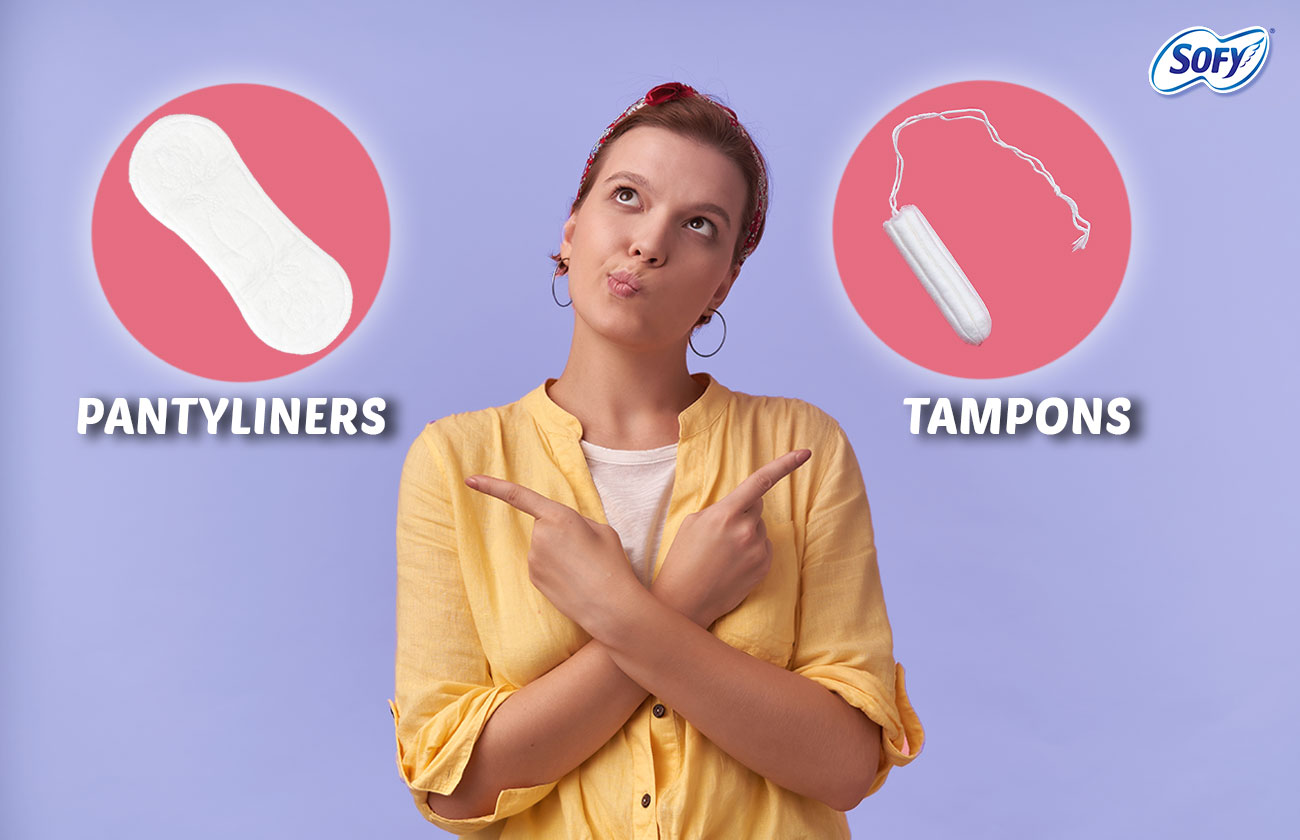Shark week can be tricky. You prep all your essentials — tampons, menstrual cups, heating pads, and pain relief. Then you check your panties and… it’s a false alarm. Do you grab a tampon, a sanitary pad, or rely on pantyliners? Let’s clear the confusion.
Pantyliners and tampons serve different purposes, and knowing when to use each can make your period hassle-free.
What Are Pantyliners?
Pantyliners are thin, soft, absorbent pads that line your underwear. They are smaller than regular sanitary pads and are primarily used for everyday hygiene, not just periods.
Benefits of Pantyliners:
- Absorb vaginal discharge
- Help with urine incontinence
- Keep the area dry and comfortable in summer
- Reduce bacterial infections
- Mask vaginal odor (scented versions)
Pantyliners come in different types:
- Eco-friendly
- Rash-free
- Super absorbent
- Anti-microbial
Tip: Change pantyliners every 5 hours. Avoid overnight use to prevent rashes and let your skin breathe.
Extra Uses of Pantyliners
Pantyliners are not just for periods. They also:
- Prevent sweaty armpits
- Avoid “camel toe” in tight leggings
- Keep you fresh during workouts or long office days
Understanding Tampons
Tampons are cylindrical cotton/rayon pads inserted into the vagina. They absorb menstrual flow before it exits, allowing you to move freely without worrying about leaks.
Key Features of Tampons:
- Available in light, regular, and super absorbency
- Can have applicators or be digital (inserted with fingers)
- Absorption lasts up to 8 hours
- Ideal for active days
Health Warning: Wearing tampons for too long can lead to toxic shock syndrome. Always follow instructions and change tampons regularly.
Using Tampons and Pantyliners Together
Even with a properly inserted tampon, leaks can happen. That’s where pantyliners come in handy.
Benefits of Combining Both:
- Extra protection during heavy flow
- Covers entire surface area of panties
- Absorbs excess moisture
- Keeps you comfortable and fresh
Tip: On heavy flow days, wear a tampon plus a pantyliner for backup.
Why Both Are Essential
Pantyliners and tampons complement each other:
- Pantyliners: Everyday hygiene and backup protection
- Tampons: Freedom of movement and strong absorption during periods
Having both ensures you stay protected, comfortable, and confident throughout your cycle.
Takeaway:
Periods don’t have to be stressful. Gear up with pantyliners for everyday freshness and tampons for heavy flow. Combining these products can make your shark week hassle-free and comfortable.
FAQ’s
2. When should I use a pantyliner?
Use a pantyliner for everyday vaginal discharge, light spotting before or after your period, or as a backup when using internal products. Since pantyliners are thin and designed for minimal absorbency, they’re ideal when you want to stay fresh without the bulk of full pads or tampons. Note: they aren’t sufficient for a full heavy-flow day.
3. When is a tampon more appropriate to use?
A tampon is more suitable when you’re experiencing your period, especially on medium or heavy flow days, or when you need freedom of movement (e.g., swimming, sports). Since tampons absorb menstrual blood internally, they reduce bulk and leak risk when used correctly. They require proper insertion and regular changing.
4. Can pantyliners replace tampons on heavy flow days?
No — pantyliners cannot reliably replace tampons on heavy flow days. They have limited absorbency and are designed for light discharge or spotting. Using them alone during heavier menstrual flow may lead to leakage and discomfort. In such cases, internal products or pads with higher absorbency should be used.
5. Is it safe to use tampons and pantyliners together?
Yes — using a tampon + a pantyliner together can offer extra protection. The tampon absorbs internally while the pantyliner catches any external spillage or leaks, particularly on heavier days or when you’re unsure of your flow. This combo can increase confidence and reduce the chance of visible stains.
6. How often should I change a tampon or pantyliner?
Tampons should be changed every 4–8 hours depending on flow and brand instructions (to reduce risk such as TSS). Pantyliners should be changed more frequently—around every 5 hours or sooner if saturated—because they’re thin and less absorbent and should not be used overnight.
7. Are pantyliners only for menstruation?
No — pantyliners are not just for menstruation. They’re ideal for non-period days for light discharge, pre-period spotting, or as backup protection when using tampons. Their thin, breathable design makes them suitable for everyday use and helps maintain freshness outside heavy-flow days.
8. What are the benefits of choosing the right product for the right situation?
Choosing the right product helps you stay comfortable, protects against leaks, and supports hygiene. Tampons suit active situations and heavier flow; pantyliners suit light discharge and backup use. Using each correctly means you don’t over-absorb with a tampon when not needed or under-protect with a liner when flow is heavy.
9. What risks are associated with incorrect use of tampons or pantyliners?
Incorrect use of tampons (e.g., leaving in too long) may increase risk of complications like toxic shock syndrome (TSS). Using pantyliners for heavy flow or overnight can result in leakage, skin irritation or rashes. Both products must be changed regularly and used as intended for flow type and duration.
10. How does lifestyle influence product choice between tampon and pantyliner?
Lifestyle plays a big role: if you’re active (sports, swimming, on-the-go) and have a heavier flow, a tampon offers discreet protection and freedom of movement. If you’re on a light flow day, managing discharge, or want minimal bulk and maximum comfort, a pantyliner works better. Matching your routine with product helps maximise comfort and confidence.

